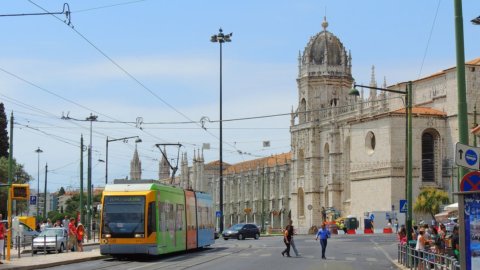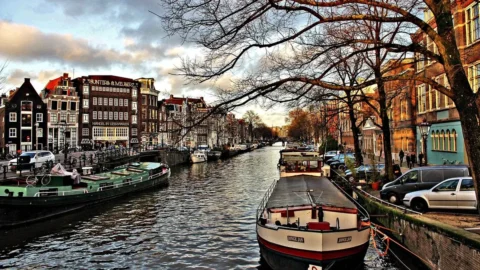With growth at 0,7% q/q in Q4, Portugal ended 2017 with the largest GDP increase in a decade, and is now only minus 2% from pre-crisis levels. In the last quarter of 2017, GDP contributed two tenths of the annual result (2,7%) from 1,6% in 2016. In the first quarter of 1, consensus estimates and economic indicators are consistent with an expansion around 2018% t/t; in 0,5 we expect growth to consolidate around 2018%, still above potential.
Consumption was once again the engine of growth in 2017, driven in particular by the purchase of durable goods in the second half of the year, with an annual average increase of 2017% in 2,2: consumption is growing at a rate of 2% for the fourth consecutive year. The level of household confidence is at an all-time high and above the Eurozone average and we expect the climate of confidence and optimism to remain well established and supportive of consumption at least for the entire first half of the year, after which it could starting to see a moderation in the trend.
Furthermore, wage dynamics should also continue to support consumption for most of 2018, as should the savings rate, which is growing again. Inflation stabilizing at around 1,6% in 2018, on the same level as in 2017, will be a further element in favor of consumption. The core trend in consumer prices is in line with the Eurozone average at around 1,2%, largely due to the strength of the euro on the manufactured goods component, while we expect a contribution to the acceleration of the CPI will come from the energy component.
Productive investments saw a real boom in 2017, growing by as much as 9,2% from 1,6% in 2016, supported especially by expansions of production capacity in the automotive sector but also by numerous foreign companies that are investing in new factories or expanding existing ones: since 2015 the country is proving to be a pole of attraction in Europe for e-commerce, aeronautics and precision mechanics.
In recent years, in fact, the Portuguese productive fabric has begun to transform itself by including production sectors with higher added value than the traditional textile and leather sector for which the country was traditionally known. According to the World Bank's ease of doing business classification, Portugal has moved up the ranks and is now ranked 25th in global terms, first among Southern European countries. In the two-year period 2016-17 the main investor countries were the Netherlands, Spain, Luxembourg and the United Kingdom.
In the last two years, the Government and local communities have also taken positive steps to promote employment services and streamline recruitment procedures by foreign companies. The improvement in financial conditions and credit disbursement and the increased profit margins of companies will allow fixed investments to make a strong contribution to growth also in the current year, in which we expect growth of around +5,2% yoy to.
The labor market is in a very positive phase, with employment continuing to grow at a faster rate than GDP, especially thanks to the tourism sector which is experiencing a season of renaissance due to the improvement in the international perception of the country. Unemployment has fallen at an impressive rate, to its lowest since 2004 and is now below the average for the Eurozone and many other countries and the lowest among southern European countries. For the current year we expect a further decline to 8,3% from 9,1%.
As far as foreign trade is concerned, exports have grown over the years and have gone from accounting for 30% of GDP before 2010 to 40% today: the country has managed to focus more on international markets given that in years of the crisis the internal market, with the austerity to which it had been subjected, could not support sufficiently dynamic growth. The goal of the government agency to promote the internationalization of Portuguese companies is to reach 2025% of GDP by 50. The crisis experienced by the country has operated a natural selection on the companies, leaving only the most solid ones alive, but only 5% of the approximately 400 currently active are exporting companies.
The margin for development therefore remains wide. The main export market is confirmed as the Eurozone, with 74% of total exports (grown by 6% y/y), followed by the United States (6%), the Far East (5%) and South America (3 %). The products that most contributed to the good export performance in 2017 were machinery (+15% y/y), motor vehicles (+11%), metals and plastics (+7%). In 2017, exports advanced by 7,4% against imports that increased by 7,2%: the contribution of net exports was however negative by four tenths. For the current year we expect a positive contribution from the foreign channel (import at 4,5% y/y and export at 5,5% y/y).
The scenario for the country has therefore definitely improved. The economy is growing faster than other European partners, making Portugal now one of the most promising countries in the Eurozone. In 2017, the public debt sector also recorded appreciable progress, with the spread against the Bund widened, now around 100 basis points, one of the best performances among the Eurozone countries, thanks also to the recent upgrade by Fitch of the Portuguese card to BBB. The trajectory of the public finances is confirmed to be set in the right direction even if the approach to the Maastricht parameters remains far away: the trajectory of the public debt is therefore expected to drop to 126,5% from 127,7% last year.
Therefore, the high public debt will remain the main element of fragility of the country, together with the banking system, even if the reduction in NPLs in recent quarters suggests that the fruits are coming on this front too. The current government structure led by socialist leader António Costa has therefore managed to reconcile the need to control public finances after exiting the bailout with the consolidation of the economic recovery. However, the political risks could once again become significant as we approach the next general elections in 2019.





